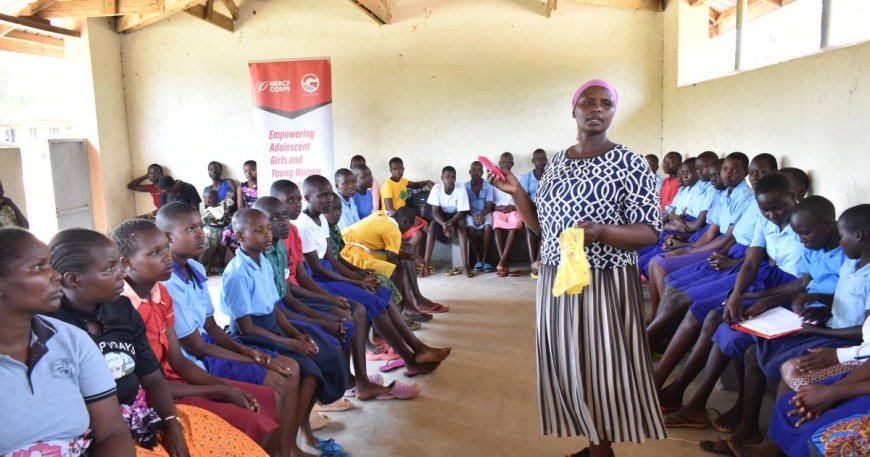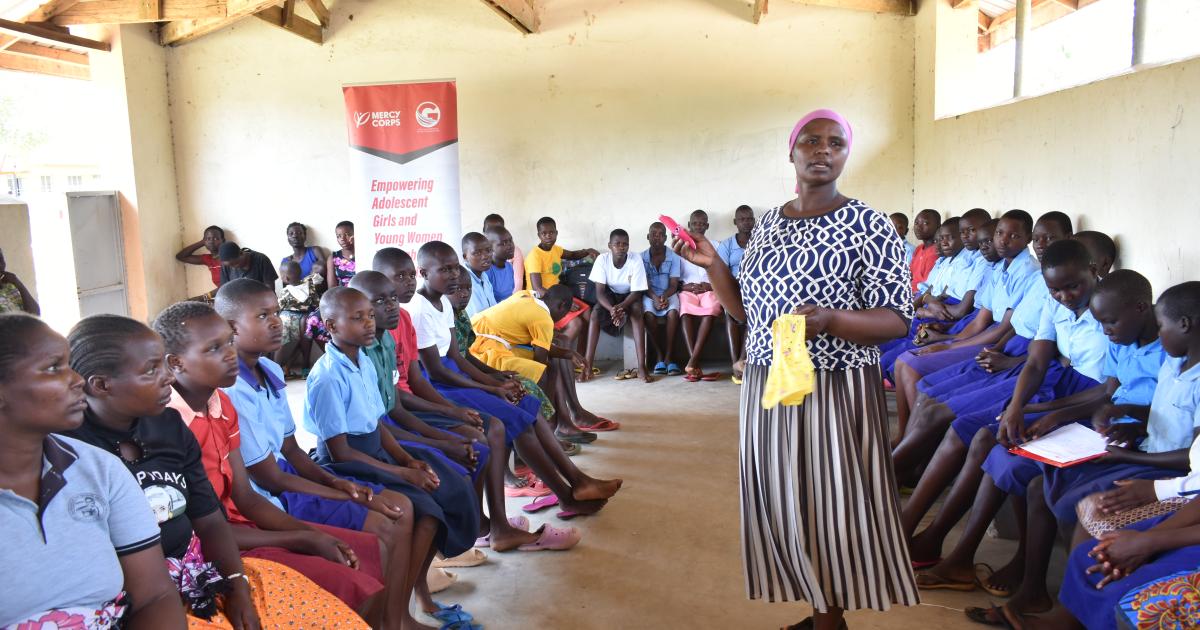The Sexual Reproductive Health Rights Programme Learning Brief

Sustainable Development Goals (SDGs) and Sexual and Reproductive Health in Karamoja, Uganda

Introduction
Sexual and reproductive health (SRH) is a vital component of health that integrates the physical, mental, and social well-being of individuals. In the Karamoja subregion of Uganda, addressing SRH is crucial due to the high prevalence of adolescent girls aged 15-19 who have begun childbearing. This region also exhibits unique demographic characteristics, such as a higher prevalence of polygamous unions compared to the national average. The total fertility rate (TFR) in Karamoja is also higher than the national rate. Additionally, a significant percentage of women in the region express a desire for additional children.
Challenges in Accessing Reproductive Health Services
Several factors contribute to the underutilization of reproductive health services in hard-to-reach settings like Karamoja. These factors include social stigma, ignorance, lack of confidentiality and privacy, misconceptions about service quality, and religious and cultural prohibitions. The prevalent practices of polygyny and ‘bride capture’ also increase the risk of sexually transmitted infections (STIs). Furthermore, a considerable number of women in Karamoja deliver at home, exposing them to complications during childbirth that require emergency skilled attendance. Gender roles and responsibilities in the region also impact women’s ability to prioritize rest and healthcare during pregnancy and childbirth. These factors intersect with adolescent sexual and reproductive health (ASRH) in complex ways.
Effective Practices for Enhancing Access to SRH Services
This learning brief highlights effective, context-relevant practices for enhancing access to sexual reproductive health services and products for youth and adolescents in the Karamoja region. Based on evidence of positive change amongst participants, it advocates for scaling up successful strategies to drive broader impact. The brief explores key learning questions, including:
- What are the specific SRHR needs and gaps for young people in the Karamoja subregion?
- What are the best practices for creating and maintaining safe spaces for discussing SRHR topics?
- What impact does the involvement of local government officials, traditional leaders, elders, religious leaders, and civil society organizations have on the sustainability of SRHR programs?
- How effective is the use of peer educators in normalizing positive attitudes towards SRHR and driving the uptake of services?
Download the full report now to learn more about the effective practices and strategies for enhancing access to sexual reproductive health services and products for youth and adolescents in Karamoja, and join the effort to create positive change in the region.
SDGs, Targets, and Indicators
-
SDG 3: Good Health and Well-being
- Target 3.7: By 2030, ensure universal access to sexual and reproductive healthcare services, including for family planning, information and education, and the integration of reproductive health into national strategies and programs.
- Indicator 3.7.1: Proportion of women of reproductive age (aged 15-49 years) who have their need for family planning satisfied with modern methods.
-
SDG 5: Gender Equality
- Target 5.6: Ensure universal access to sexual and reproductive health and reproductive rights as agreed in accordance with the Program of Action of the International Conference on Population and Development and the Beijing Platform for Action and the outcome documents of their review conferences.
- Indicator 5.6.1: Proportion of women aged 15-49 years who make their own informed decisions regarding sexual relations, contraceptive use, and reproductive healthcare.
-
SDG 10: Reduced Inequalities
- Target 10.3: Ensure equal opportunity and reduce inequalities of outcome, including by eliminating discriminatory laws, policies, and practices and promoting appropriate legislation, policies, and action in this regard.
- Indicator 10.3.1: Proportion of population reporting having personally felt discriminated against or harassed in the previous 12 months on the basis of a ground of discrimination prohibited under international human rights law.
Table: SDGs, Targets, and Indicators
| SDGs | Targets | Indicators |
|---|---|---|
| SDG 3: Good Health and Well-being | Target 3.7: By 2030, ensure universal access to sexual and reproductive healthcare services, including for family planning, information and education, and the integration of reproductive health into national strategies and programs. | Indicator 3.7.1: Proportion of women of reproductive age (aged 15-49 years) who have their need for family planning satisfied with modern methods. |
| SDG 5: Gender Equality | Target 5.6: Ensure universal access to sexual and reproductive health and reproductive rights as agreed in accordance with the Program of Action of the International Conference on Population and Development and the Beijing Platform for Action and the outcome documents of their review conferences. | Indicator 5.6.1: Proportion of women aged 15-49 years who make their own informed decisions regarding sexual relations, contraceptive use, and reproductive healthcare. |
| SDG 10: Reduced Inequalities | Target 10.3: Ensure equal opportunity and reduce inequalities of outcome, including by eliminating discriminatory laws, policies, and practices and promoting appropriate legislation, policies, and action in this regard. | Indicator 10.3.1: Proportion of population reporting having personally felt discriminated against or harassed in the previous 12 months on the basis of a ground of discrimination prohibited under international human rights law. |
Analysis
1. Which SDGs are addressed or connected to the issues highlighted in the article?
The issues highlighted in the article are connected to SDG 3: Good Health and Well-being, SDG 5: Gender Equality, and SDG 10: Reduced Inequalities.
2. What specific targets under those SDGs can be identified based on the article’s content?
Based on the article’s content, the specific targets identified are:
– Target 3.7: Ensure universal access to sexual and reproductive healthcare services, including for family planning, information and education, and the integration of reproductive health into national strategies and programs.
– Target 5.6: Ensure universal access to sexual and reproductive health and reproductive rights.
– Target 10.3: Ensure equal opportunity and reduce inequalities of outcome, including by eliminating discriminatory laws, policies, and practices and promoting appropriate legislation, policies, and action in this regard.
3. Are there any indicators mentioned or implied in the article that can be used to measure progress towards the identified targets?
The article mentions or implies the following indicators:
– Indicator 3.7.1: Proportion of women of reproductive age (aged 15-49 years) who have their need for family planning satisfied with modern methods.
– Indicator 5.6.1: Proportion of women aged 15-49 years who make their own informed decisions regarding sexual relations, contraceptive use, and reproductive healthcare.
– Indicator 10.3.1: Proportion of population reporting having personally felt discriminated against or harassed in the previous 12 months on the basis of a ground of discrimination prohibited under international human rights law.
These indicators can be used to measure progress towards the identified targets.
Overall, the article highlights the importance of addressing sexual and reproductive health issues, promoting gender equality, and reducing inequalities in the Karamoja subregion of Uganda. It emphasizes the need for universal access to reproductive healthcare services, informed decision-making for women, and the elimination of discriminatory practices. The identified SDGs, targets, and indicators provide a framework for measuring progress and guiding interventions in these areas.
Source: mercycorps.org








